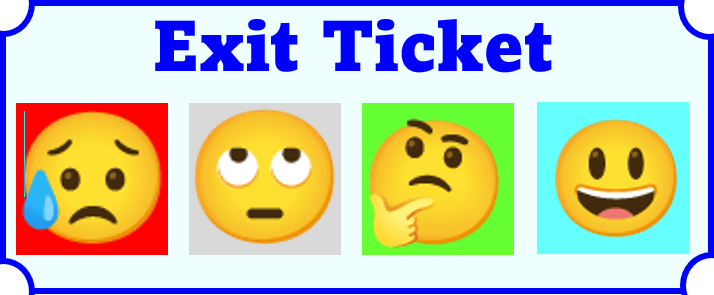Objective:
Students will be able to apply mathematics solve financial problems arising in everyday life and justifying solutions (such as income and careers, smart shopping, ways to pay, growing a business, and investing in education).
Students will calculate and interpret a check balance that includes deposits, withdrawals, and transfers. Students will describe and interpret the information in a credit report.
Students will be able to set financial goals, create a helpful budget, create spending plans to support our budget, track their spending, plan for the future.
Focus:
The focus will be to apply mathematics solve financial problems arising in everyday life and justifying solutions, and achieve financial success by spending money carefully, saving regularly, and investing carefully.
Introduction:
This unit seeks to provide the student with the basic skills that allow them to make smart decisions with their money and achieve personal financial stability.
“The number one problem in today’s generation and the economy is the lack of financial literacy”. Alan Greenspan
The students must have a clear understanding of money and how it is spent and saved.
Standards:
TEKS 6.14A, 6.14B, 6.14C, 6.14E, 6.14F
Mind map
Anchor Chart:
Vocabulary:
>>Unit Review ( )<<
I DO… (You Watch):
****
*
*
*
*
*
*
*
*
*
*
WE DO…(Together)
YOU DO… (I watch/guide)
 CM04 Change
CM04 Change
CM16 Grocery
CM08 Earning_Money
CM09 Money_Word Problems
PE11 Commission
CM15 Consumer_Math
CM05 Discount
PE09 Markup
PE08 Price_with_Tax
CM18 Retail_Math
PE10 Simple_Interest
PE07 Tax
PE12 Tips
CM01 Unit_Price
CM02 Unit_Rate
CM03 Best Deal
CM06 Discount_1
CM07 Discount_2
CM10 OfficeDepot
CM11 Olive
CM12 Restaurant
CM13 Sales_Tax
CM14 Math_at_Dinner
CM03 Best Deal
Warm-up – Daily Review. Math videos & Skill Builders from my blog (hands-on, online curriculum aligned math worksheets that automatically tracks student progress) (to be completed as homework if not completed in class).
Differentiation:
Accommodations for instruction will be provided as stated on each student’s (IEP) Individual Education Plan for special education, 504, at risk, and ESL/Bilingual.
I will use the KWL approach (What do I Know, What do I want to know, What did I learn) to determine student readiness. Differentiation will be through small groups, visuals, use of calculators, extra time, supplemental aids and reteach if necessary.
Planning:
The student will learn about money and budgeting, and understand how to use math to solve real-world problems related to money.
Performance Indicators:
Students will be able to:
- decide on the best purchase by using unit price.
- calculate sales tax for a given purchase.
- calculate and compare simple interest.
- identify the components of a personal budget.
- create a net worth statement using assets and liabilities.
Essential Questions:
Why do we use money?, What can I afford?, What are the risks of credit and debt?, What are the benefits of having a budget?
Journal:
- What are the career choices that are in demand? How do you get admitted to college and what are the sources for funding college?
- What career fields are growing? Shrinking? Why?
- What are the steps involved in buying a house and how do I determine when I can afford a house?
Closing Product:
Students will be able to solve problems involving check accounts (deposits, withdrawals, and transfers).
Students will be able to solve problems involving credit and interest.
Students will be able to balance a check book.
Students will set (and share) their own financial goals and make plans for the future
6.14A I can compare checking account and debit card offers from different banks.
6.14B I know the difference between debit cards and credit cards.
6.14C I can balance a check register.
6.14D I know the importance of a good credit history.
6.14E I know what information credit reports have and how long it is retained.
6.14F I know how borrowers and lenders use credit reports.
6.14G I can explain various methods to pay for college.
6.14H I can compare the salaries of occupations and know the effects on lifetime incomes.




